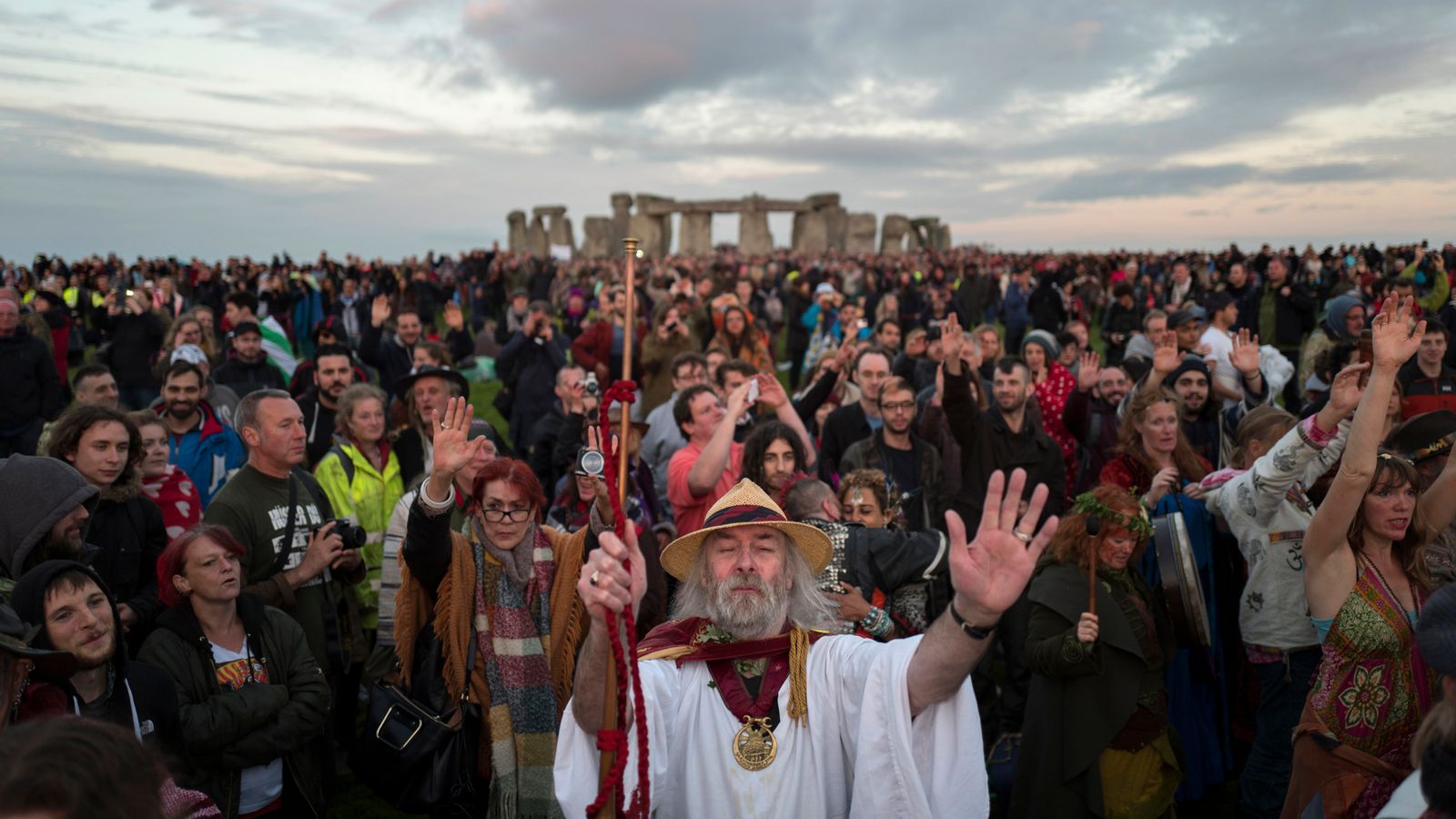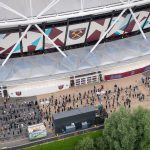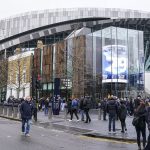Organisers of events scheduled to take place when England is finally lifted out of lockdown are scrambling to figure out how a post-COVID world will work.
Boris Johnson announced that 21 June is when he hopes to lift all restrictions and allow large events to go ahead.
There are a few major events set to happen that day and the day after, bringing hope to the industry – but also some confusion.
Summer Solstice
In the early hours of 21 June, tens of thousands of people are expected to descend on Stonehenge in Wiltshire to celebrate the Summer Solstice.
The annual event usually attracts about 20,000 people from around the world and people start gathering from the night before to make sure they catch the sunrise.
English Heritage manages the site and told Sky News they are processing the prime minister’s announcement and will be trying to come up with a plan in the next few weeks.
Summer Solstice is a massive event but it is not ticketed and anybody can turn up, although 2021 could look a bit different if numbers have to be limited or managed.
A large amount of traffic normally builds up around Stonehenge the night before, but as the lockdown may not be lifted until midnight, that could be shifted to the early hours of 21 June.
It may mean people will have to miss out on sunset on 20 June at the site but they should be able to enjoy the silence of the crowd watching the sunrise over the sacred stones at 4.52am the next day.
There may also be a lack of international visitors if there are travel restrictions, which could bring the numbers down.
Diana Ross concert
The American singer’s rescheduled “Top of the World Tour” show at The O2 in London is set for 21 June.
She will be one of the first concerts people will be able to go to if the lockdown is lifted that day.
AEG Presents, which runs The O2, will have to establish whether they will be allowed to fill the 20,000-capacity area.
Steve Guest, publicist for the tour, told Sky News: “At the moment it’s too early to tell, there are so many steps to go through, without any setbacks to get to that point.
“We are going to wait to see how the next couple of weeks go before we make any decisions.”
Under stage three of the PM’s roadmap, large indoor performances will only be allowed with 1,000 people but they are hoping to lift that by 21 June.
The O2 website currently says anyone purchasing a ticket will be agreeing to wear a face covering throughout their visit and to share their data with NHS track and trace.
Only see-through bags are allowed so security screening can be contact-free and the whole venue is cashless, with all tickets digital.
At the moment, The O2 says it will be operating socially distanced events, with seating of different households one metre apart and one-way systems in place.
England v Czech Republic
The lockdown is set to be lifted a day before England’s footballers face Czech Republic in their third and final Euro 2020 group match at Wembley in London.
The UK’s largest sports venue, with a capacity of 90,000, will be limited to 10,000 people ahead of that so fans are waiting to see if 21 June means it can be filled.
While football fans were ecstatic at the timing, UEFA, which hosts the tournament, is currently figuring how this could be made into a reality.
The FA, which manages Wembley, told Sky News they are trying to determine what can happen after the PM’s announcement.
UEFA president Aleksander Ceferin said in January the organisation is “committed to holding EURO 2020 in the 12 cities originally planned”.
As with all sports events, it is not just the stadium that will have to consider how they hold the event, but also surrounding pubs, restaurants and the community.
The government is launching a group to look into how events can go ahead, which will include assessing whether mass testing and vaccine or testing certificates would be needed.
Although Mr Johnson’s roadmap out of lockdown has given the British public much to look forward to in June, that comes with a caveat that 21 June is only the earliest lockdown could be fully lifted and the date could be later if the data does not support it.






















